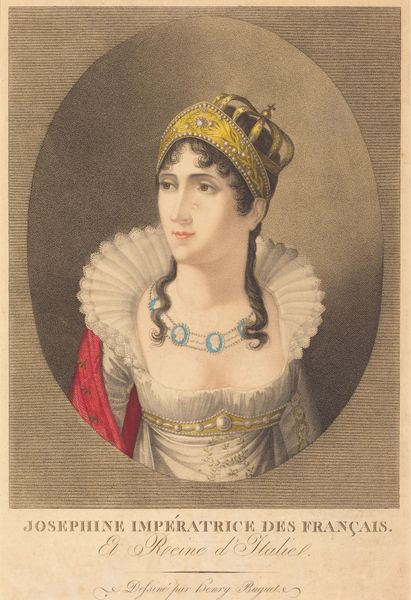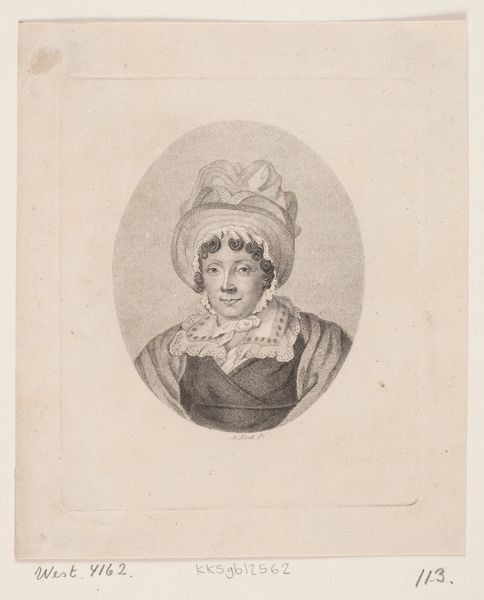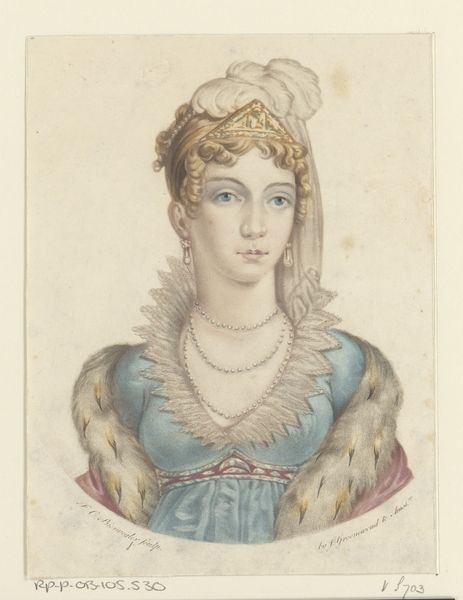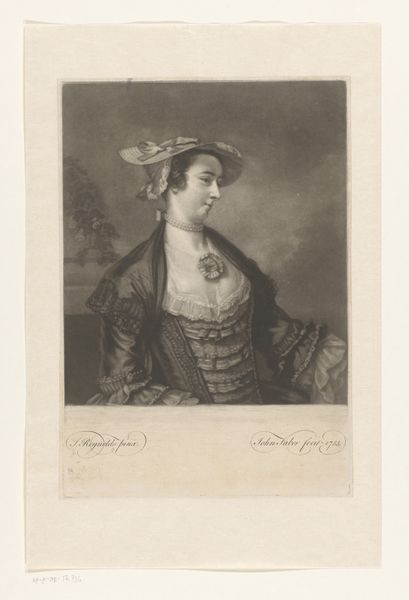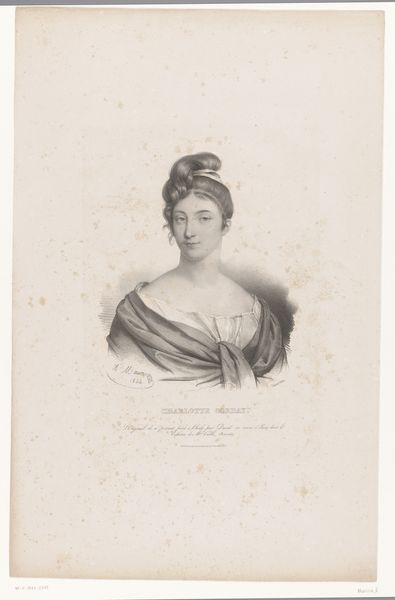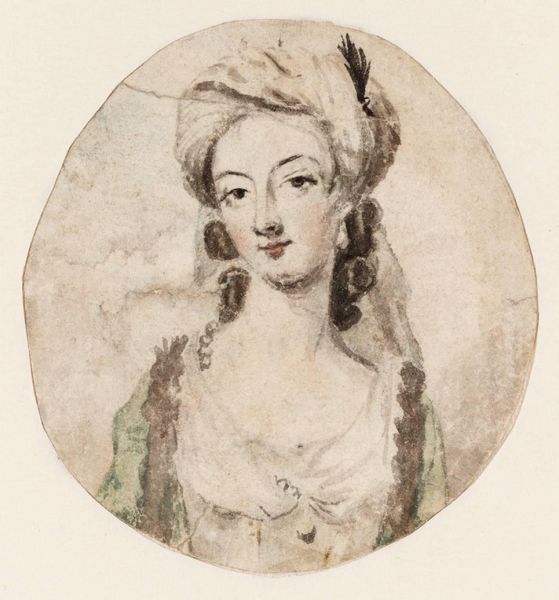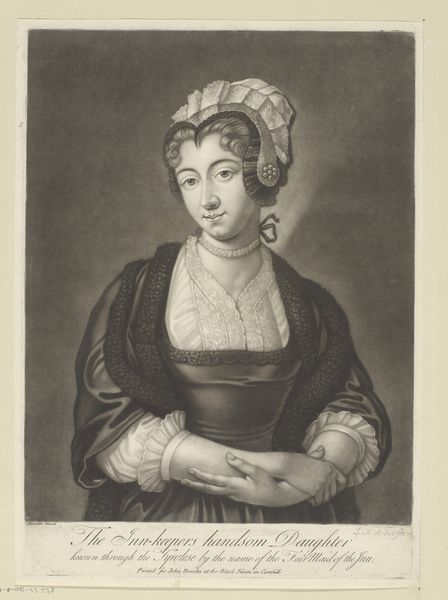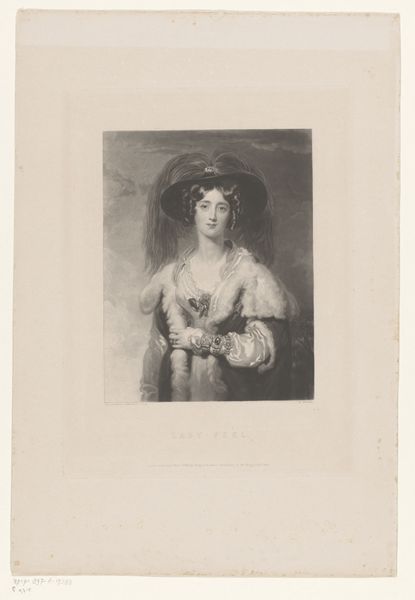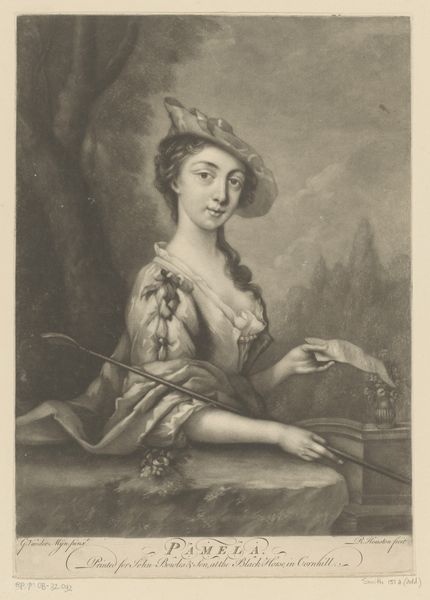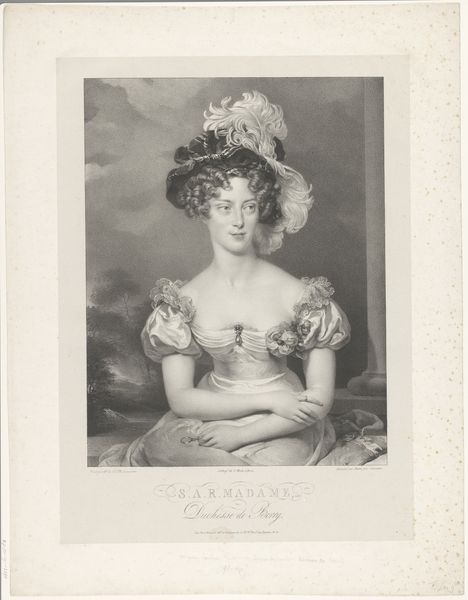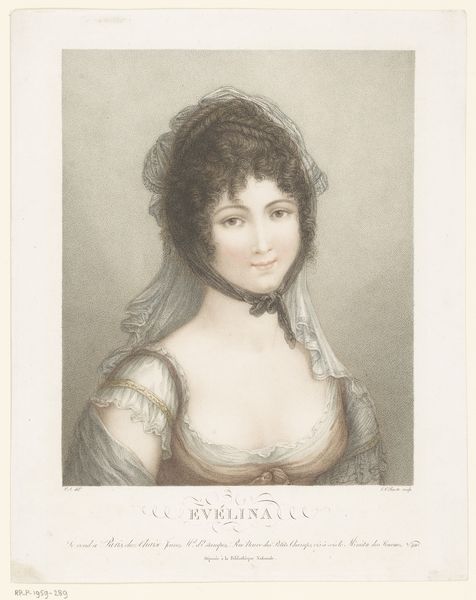
print, watercolor
#
portrait
#
neoclacissism
# print
#
watercolor
#
romanticism
Copyright: National Gallery of Art: CC0 1.0
Michele Bisi created this stipple engraving of Princess Auguste Amelie of Bavaria sometime in the early 19th century. Bisi, an Italian artist, likely made this print to circulate amongst the European aristocracy. Consider the politics of imagery. Stipple engraving was a popular method for reproducing portraits, and it allowed for mass production and distribution. This portrait flattens the three-dimensional reality of the sitter and the stippling process softens her features, creating an idealized image of feminine beauty and nobility. The architecture of her bodice reinforces the Princess's elevated social status, as does her serene and composed expression. Historians of prints would look to sources such as newspaper advertisements, letters, and diaries to understand the social context in which it was made. The meaning of this print is contingent on its circulation and reception, offering insights into the cultural values and power dynamics of the time.
Comments
No comments
Be the first to comment and join the conversation on the ultimate creative platform.
